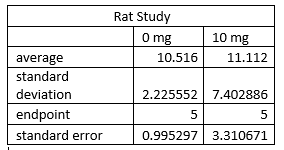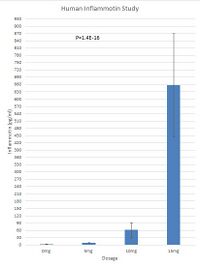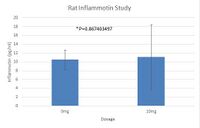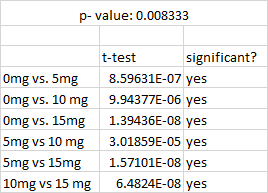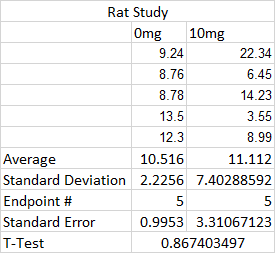BME100 f2015:Group11 8amL2
| Home People Lab Write-Up 1 | Lab Write-Up 2 | Lab Write-Up 3 Lab Write-Up 4 | Lab Write-Up 5 | Lab Write-Up 6 Course Logistics For Instructors Photos Wiki Editing Help | |||||||
|
OUR TEAM
LAB 2 WRITE-UPDescriptive StatisticsHuman Study
ResultsExperiment 1 Experiment 2
AnalysisHuman Study For the human study, there were more than two groups, so a one-way ANOVA was used for comparison. The p-value is less than 0.05, so there was a statistically significant difference.
When completing an ANOVA test, a post-hoc test is useful to compare each of the groups to one another.
The p-value used for these t-tests was 0.008333. The regular p-value, 0.05, was divided by 6 (the number of comparisons) to get this p-value. All of the values were less than this p-value, so there is a statistically significant difference when comparing every group to each other.
Rat Study The rat study only consisted of two groups, meaning that a T-test can be used to make the comparison. The p-value from this T-test is greater than 0.05, meaning there is no statistical difference between groups.
Summary/DiscussionThe data from the rat study was inconclusive. Although the averages inferred that there was a linkage between LPS dosage and the amount of Inflammotin, there was a lot of deviation in the data set. There was not a significant enough difference in the data set to conclude that the LPS dosage affected the production of Inflammotin (only a 13% confidence that there was a linkage between 0mg and 10mg). The data from the human study of Inflammotin concluded that there was in fact a relationship between the dosage and the amount of Inflammotin produced. The ANOVA and t-tests determined there was almost 100% confidence that there was a linkage between each LPS dosage (0mg-15mg) and the amount of Inflammotin protein produced in the elderly. Although the rat study was not able to link the LPS dosage with the amount of Inflammotin, the LPS treatment can be concluded to increase the Inflammotin protein levels in the elderly. |
|||||||


